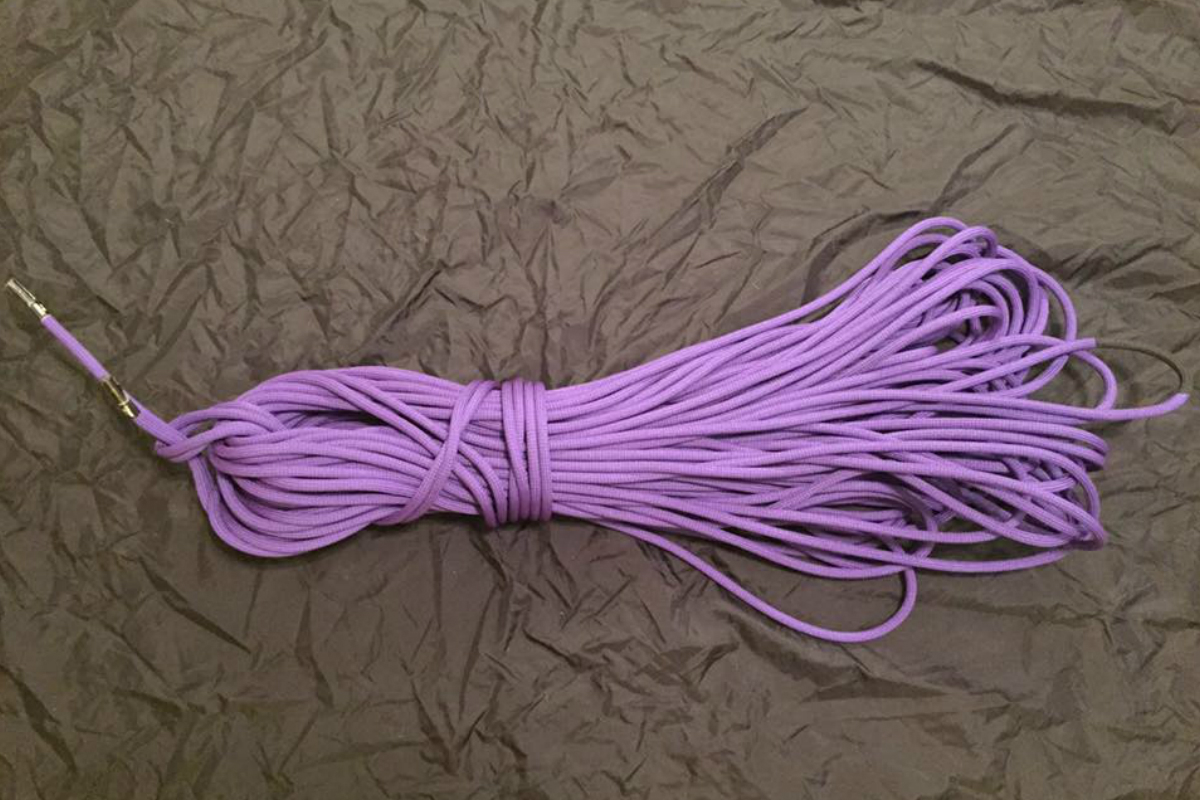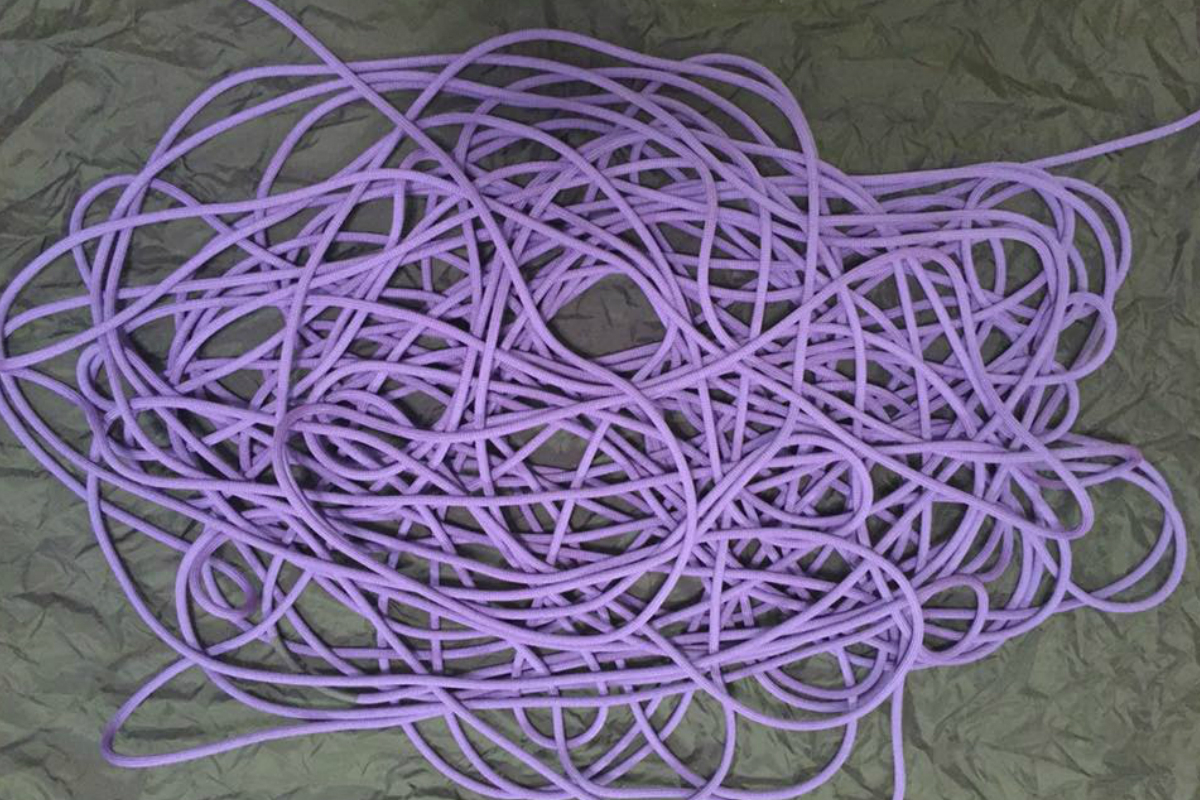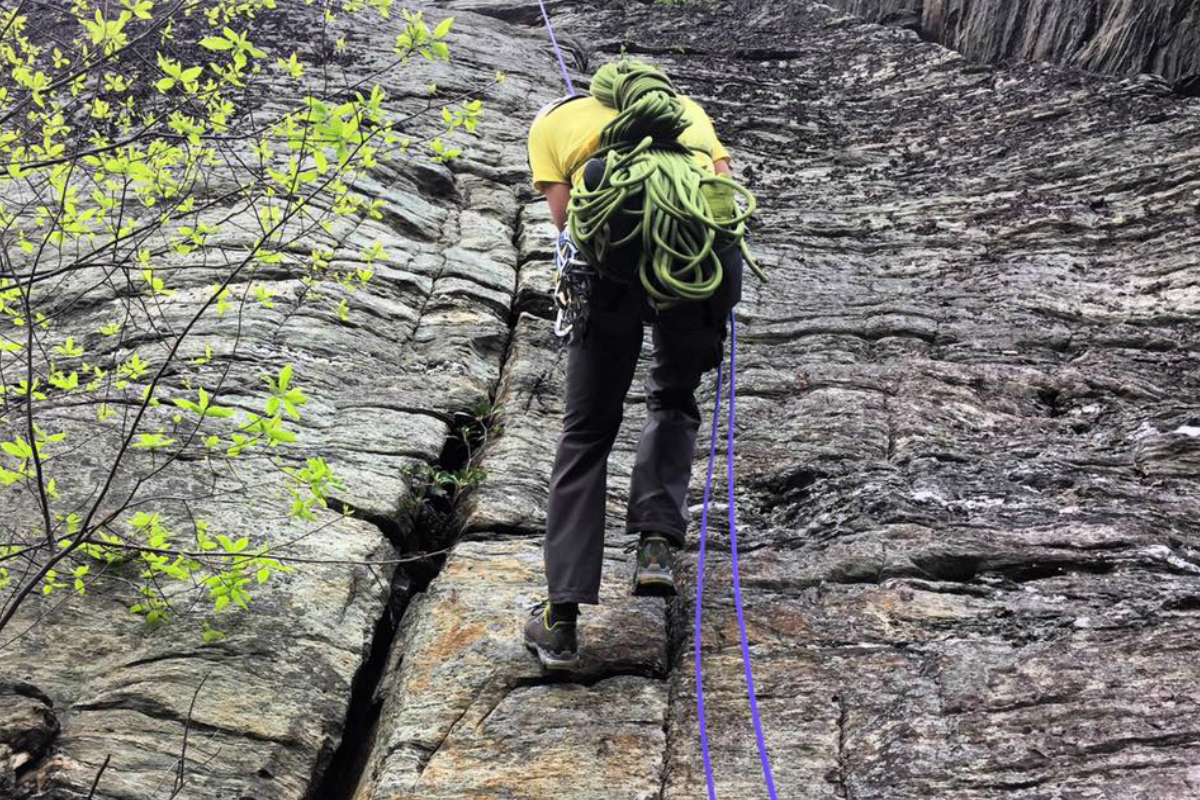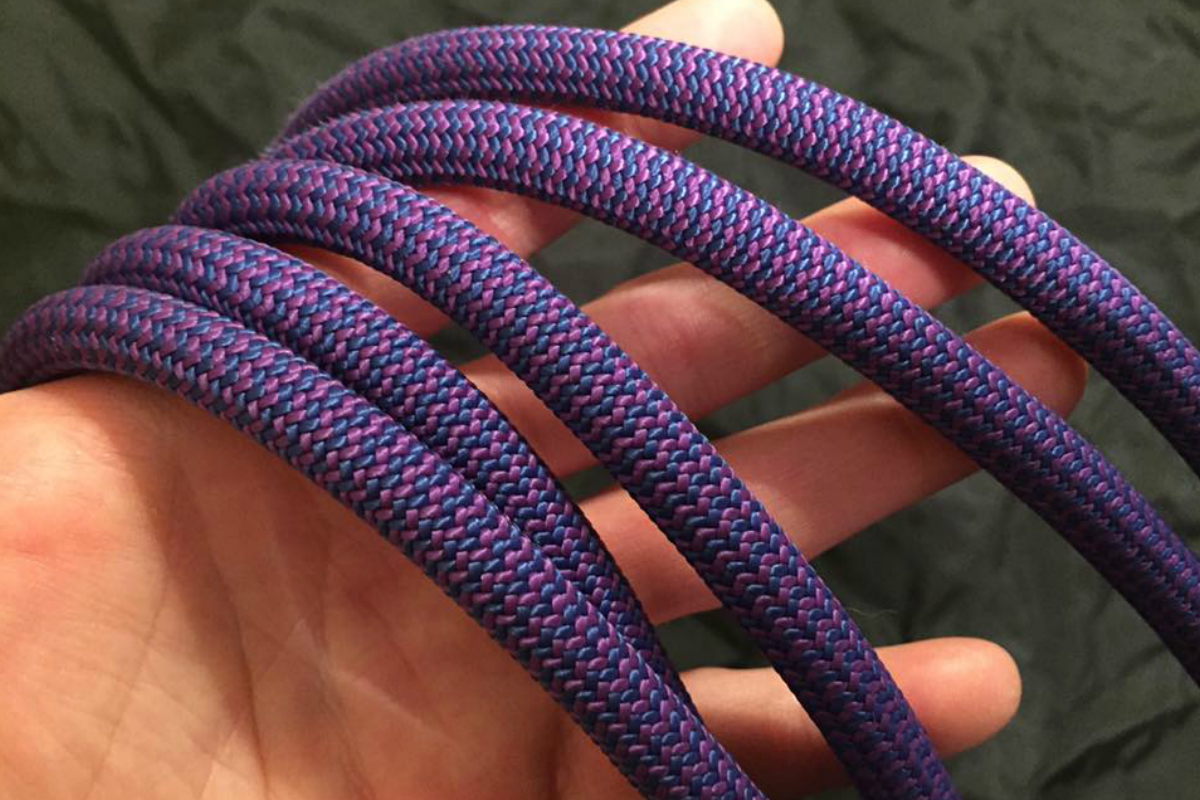Your climbing rope is your lifeline - it keeps you safe when you fall and could be considered the most important piece of equipment in your gear arsenal.
Although modern ropes are pretty hardy and can withstand plenty of abuse, it’s important to care for your rope like your life depends on it - because it does.
This includes from the moment you unpackage it to the moment you put it away on the shelf for retirement.
Caring for your climbing rope includes properly using it, cleaning it, and storing it - and also understanding ways you could possibly unintentionally misuse it or abuse it.
Approach caring for your climbing rope like you would approach caring for anything of value: with respect, attention to detail, and diligence.
What to do with a brand new climbing rope
Proper rope management begins with unpackaging. When you purchase a rope, it is coiled by the manufacturer and properly uncoiling it can noticeably reduce future kinking and twisting.
After you remove the rope from the packaging, wrap the coiled rope around your forearms and spread your arms. Apply tension while rotating your arms around each other to unwind it without introducing any kinks or twists. Next, flake the rope from one end to the other. Finally, recoil the rope for storage on a shelf or preferably in a rope tarp.
It’s best to store your rope in a cool, dry place - out of reach of potentially harmful chemicals, moisture, heat, and direct sunlight.
For those of us who live in households with furry friends, this means out of their reach so your precious climbing rope doesn’t accidentally get mistaken for a chew toy.
Proper rope management
When you’re at the crag, its easy to unintentionally abuse your climbing rope because you’re caught up in the excitement of climbing. However, paying attention to its location at all times can help reduce wear and tear in addition to possible contamination.
Make every attempt to keep the rope clean and free of debris. Don’t throw it down onto the dirt as sand and grit can work their way into the core. Using a rope tarp is a great way to keep your rope clean. If you don’t own a rope tarp, flake out your rope out onto a jacket or piece of clothing, into the grass, or onto a flat rock, if present.
Dirt build-up can result in the rope becoming stiff and unmanageable. Another tip is to avoid stepping on the rope - this includes yourself and any four-legged companions. Also, it’s important to remember that unless your rope is dry-treated, exposure to water is definitely going to negatively affect its longevity.
An unexpected source of contamination is chalk. Overchalking your hands and manipulating the rope results in a build-up of chalk on the rope, which can contaminate the yarns. This especially applies to the distance just beyond your tie-in point.
One suggestion is to make sure you’re tied in before you chalk up. Also, brush excess chalk off of your hands before untying. Studies have shown that magnesium carbonate can decrease the rope’s load-bearing tolerability over time.
Other ways to limit abrasion at the crag includes avoiding contact with sharp objects such as nut tools, cams, and other climbing hardware which over time could result in slowly fraying and working away at the rope’s sheath. More abrasion means the rope will get rougher, fuzzier, and thinner faster.
The final straw is protrusion of the core - at which point you either need to cut off that strand of the rope or retire it completely, depending on where the damage is located.
When you’re building a top rope anchor, this often results in the rope hanging down across a section of rock. While it’s important to avoid contact with sharp edges, you should also take into consideration the abrasion the rope is going to sustain as a result of rubbing across even seemingly rounded rock edges.
Rope protectors can be extremely useful for this very purpose and are highly recommended if you’re going to be top roping a ton. These products safeguard your rope against friction burns.
Another important thing to note: Ropes should never run against each other through slings.
Other crag tips include keeping your rope in the shade out of direct sunlight, as UV rays can cause degradation of nylon over time. In extremely cold conditions, such as when you’re mountaineering, be aware that freezing drastically reduces safety measures in addition to making the rope extremely difficult to manage. Dry treated ropes are absolutely recommended for mountaineering purposes.
How to clean a climbing rope
Washing a dirty climbing rope is one of the most effective ways to extend its lifespan. While there are no set guidelines on how often you should clean it, use your best judgement. When your rope appears dirty, it’s probably time to clean it.
Important things to remember:
DO NOT wash your rope in the washing machine except in one circumstance: if you wash it in a mesh bag in a front loading machine on the delicate setting without the spin cycle to avoid unwanted kinking and twisting.
Also, be sure to run an empty load through with hot water before you do so to rid the machine of any excess detergents or contaminants that could be harmful to your rope.
DO NOT use detergents, bleach, or any kind of possibly harmful cleaning chemicals when washing your rope.
The best way to wash your rope is by hand. The only thing to use when cleaning your rope should be specifically formulated rope soap.
Use a large bucket or a bathtub. Fill it with warm water, apply rope soap, and flake out the rope into the tub. Use your hands to swish it around and manually run them down the length of the entire rope to use friction as a method of removing dirt and debris. When you’re finished, drain the tub, refill it with warm water, and repeat the process to remove any remaining soap from the rope.
When you’re finished you’re going to have to dry it out completely. Flake it out onto a towel or hang it loosely on a shower rod. Never use a tumble dryer and don’t hang it out in the sun as the UV rays could be harmful.
Check out our detailed guide on how to clean your climbing rope.
Regularly inspect your rope
Your climbing rope needs to be inspected regularly for signs of wear or degradation. The easiest way to do this is by performing routine inspections. Great times for inspections are when you’re washing your rope or flaking it out at the crag - preferably both.
During an inspection, run your hands along the entire length, checking for soft spots and abrasion. Some exterior fuzziness and dirtiness is expected but you’re primarily looking out for sponginess, which indicates your rope is core shot.
A core shot rope should not be climbed on. If the sponginess is on one end it may be possible to cut it out and repair it but if it’s in the middle, it’s time to retire the rope. Remember to err on the side of caution - climbing ropes are replaceable - your life is not.
How long will my rope last?
| Usafe | Lifespan |
|---|---|
| Never used, still in packaging | 10 years |
| Occasional use (monthly) with proper cleaning and storage | 3-5 years |
| Occasional use (bi-weekly) with proper cleaning and storage | 1-4 years |
| Frequent use (weekly), lots of lead falls | 1 year of use but may be used for top-roping for another 2-3 years |
| Following a large fall or damage | Retire immediately |
Repairing rope damage and dealing with middle marks
If a small area is damaged (spongy, indicating the core is shot) near one end of the rope, it’s easy to cut off the damaged section and continue using the rope. The way to do this is to cut the rope with a sharp knife about a foot above the damaged section and then use a lighter to melt the cut rope strands on the end you intend to keep using.
The issue here is that now you’ve made one end of the rope shorter than the other - which results in an inaccurate middle mark, which is especially important in the case of a bicolor or bipattern rope where you can’t just change the middle mark.
Right out of the packaging, the middle marks on ropes are super bright and well-defined, but as experienced climbers we know all too well that over time they slowly begin to fade.
It’s possible to darken or change the location of a middle mark in the event of a repair, but the important thing to know is that you can’t just use any kind of sharpie or marker - you must use a rope-specific marker or you seriously risk damaging your rope’s integrity. The chemicals in sharpies and markers can be extremely harmful to your climbing rope - so use common sense.
Climbing is one of the most enjoyable outdoor pastimes - but like any sport you’re subject to risks and hazards. The best way to mitigate these risks is by correctly caring for your life-saving climbing equipment. This guide should help you become a responsible climbing rope caretaker.




